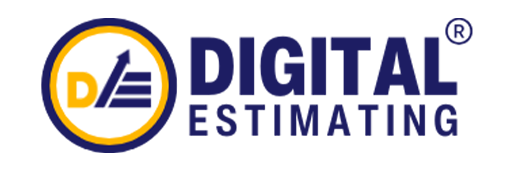Project planning depends much on construction estimate, which offers a financial framework guiding the whole building process. Accurate budgeting and effective project management rely on a knowledge of the several forms of construction estimates. We will discuss several kinds of construction estimations, their uses, and how they help Building Construction Estimates to be generally successful.
Construction projects depend on accurate projections to satisfy timelines and stay within budgets. Various forms of estimations have different uses at different phases of a project. Digital Estimating will clarify these several construction estimates and their relevance for efficient project management.
Preliminary Estimate
Early on in a project, a preliminary estimate—also called an initial estimate—is used to give a ballpark figure of the possible expenses. It is based on scant data and requires a broad examination of the scope and needs of the project.
How It Helps?
- Feasibility: Indices whether the project is financially feasible.
- Budgeting: Budgeting offers a preliminary structure.
- Decision Making: Helps interested parties choose whether to move on with thorough planning.
How Preliminary Estimates Are Done?
Using historical information from past initiatives can help you produce an accurate and effective estimate. Projecting the major component also counts to have a correct knowledge of the required resources. General unit costs are applied to these quantities to find the total cost-efficiency.
Detailed Estimate
A detailed estimate—also called a definitive estimate—is an all-encompassing study of all the project expenses. It comprises all direct and indirect costs and is grounded on thorough planning and specifications.
It helps in the following ways:
- Accuracy: offers a quite accurate cost analysis.
- Budget Management: Helps to produce an exhaustive project budget.
- Resource Allocation: guarantees all required resources are under account.
How to do a detailed Estimate?
Use detailed designs and completed specifications to guarantee a thorough and accurate estimate. Breaking costs into labor, supplies, tools, and overhead is crucial. Use unit costs and do detailed and exact quantity takeoffs for a calculated result.
Quantity Takeoff Estimate
Measuring and cataloging every item and quantity needed for a project is part of a quantity takeoff in construction. This estimate is a vital part of the comprehensive estimate and concentrates just on the material side.
How It Benefits:
- Material Planning: Material planning guarantees exact needs.
- Cost Control: Provides means of reducing material expenses.
- Procurement: Tools support the procurement process.
Establishing a Quantity Takeoff Estimate?
Evaluate complete building designs and precise drawings to produce an accurate estimate. Calculate how much of every component the local project estimation requires. Finally, list all necessary items and quantities to avoid misunderstanding.
Bid Estimate
When contractors bid for a job, they create a bid estimate. It covers labor, supplies, tools, overhead, and profit margin, therefore covering all project expenses.
How It Helps:
- Competitive Bidding: Competitive bidding gives a framework for turning in competitive bids.
- Cost Breakdown: Offers a thorough cost breakdown for openness.
- Contractual Negotiating: Helps in award and contract negotiations.
How to Estimate a Bid?
Specify the scope of the work you intend to do to define the range of tasks you will perform. For successful cost control, analyze all direct and indirect costs. Finally, be sure your estimate includes an acceptable profit margin.
Design Estimate
A design estimate develops throughout a project’s design stage. It changes as the design develops to offer a more accurate cost estimate at every design level.
The Way It Helps
- Budget Alignment: it guarantees that the design stays within budget.
- Cost Control: Points up design decisions’ financial ramifications.
- Design Decisions: Budgetary restrictions direct design decisions.
How to Build a Design Estimate?
Start with an estimate based in your conceptual design. Refine the estimate gradually as the design works out. Make sure you routinely update costs to account for any design modifications.
Construction Estimate
Once the project is about to begin, a construction estimate is developed. Based on thorough plans and specifications, this is a last estimate that includes all direct and indirect expenses as well as contingency.
How It Helps:
- Project Development: offers a financial road map.
- Cost Control: facilitates building cost control.
- Contingency Planning: Contingency Planning calls for backup for unanticipated costs.
How To Develop A Construction Estimate?
Build your estimate using the final building drawings and specifications. Analyze all expenses, including contingencies. Review and adjust the estimate often to guarantee accuracy.
Effective project management depends on a knowledge of the several forms of construction estimates. At various phases of a project, each estimate has a particular function and helps to guarantee accurate budgeting, financial viability, and effective resource allocation. Mastery of these estimations will help building experts produce better results and attain higher success.

